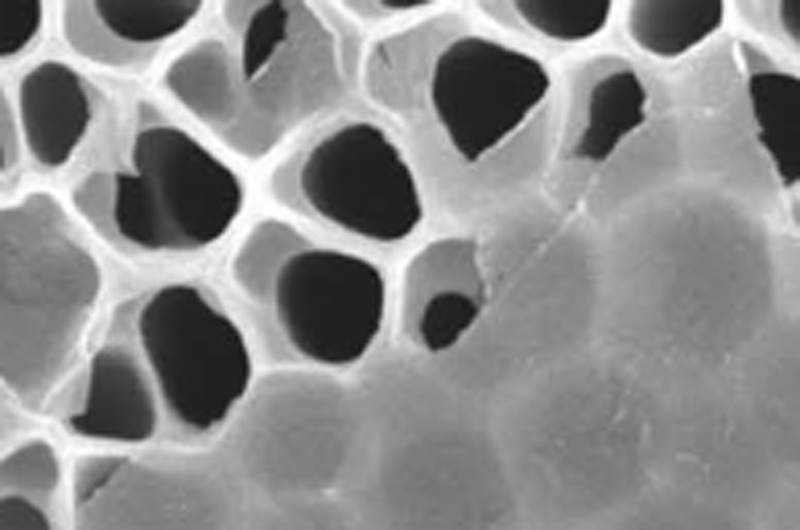Jan 30 2018
Despite the fact that hydrogen is one of the most highly abundant elements on the planet and an extremely clean source of fuel, its widespread use in the fuel cells of buses, electric cars, and heavy equipment is hindered by the high-cost gas-separation process needed to synthesize pure hydrogen.
 A team of international researchers, including Drexel’s Yury Gogotsi, PhD, are studying MXene for use in gas separation. (Image credit: Drexel University)
A team of international researchers, including Drexel’s Yury Gogotsi, PhD, are studying MXene for use in gas separation. (Image credit: Drexel University)
However, in the near future, this process might become highly effective and cost-efficient, due to a discovery by an international research team headed by Drexel University, in the United States. The team has unearthed extremely effective gas separation characteristics in a nanomaterial known as MXene that can be combined with the membranes adopted to purify hydrogen.
Although hydrogen exists in a broad range of materials and molecules in nature, the foremost being water (a combination of hydrogen and oxygen), it does not naturally occur on Earth in its pure elemental form. Isolation of hydrogen from the other elements with which it is usually bonded mandates the introduction of an electric current to stimulate and disintegrate the atoms in water molecules or filtering a gaseous mixture including hydrogen, by using a membrane to isolate the hydrogen from hydrocarbons or carbon dioxide.
The procedure of gas separation through membrane is the most efficient and low-cost process. Therefore, in the recent past, scientists have been accelerating their attempts to create membranes with the ability to absolutely and rapidly filter out hydrogen.
According to a study reported recently in the Nature Communications journal, the use of MXene material in gas-separation membranes can be the most effective method to purify hydrogen gas. The study was headed by Haihui Wang, PhD, a professor from South China University of Technology; and Yury Gogotsi, PhD, a Distinguished University and Bach professor in Drexel’s College of Engineering, in the Department of Materials Science and Engineering. It indicates that the two-dimensional structure of the nanomaterial allows it to selectively filter large gas molecules, while allowing hydrogen to pass through the layers.
In this report we show how exfoliated two-dimensional MXene nanosheets can be used as building blocks to construct laminated membranes for gas separation for the first time. We demonstrated this using model systems of hydrogen and carbon dioxide.
Yury Gogotsi
The Drexel group worked in cooperation with scientists from South China University of Technology, Jilin University (also in China) and Leibniz University of Hannover, in Germany. They described that membranes developed using MXene nanosheets were found to function better than the top-of-the-line membrane materials, with respect to permeability as well as selectivity.
Various disparate types of membranes are presently used across the energy industry; for instance, for purifying coolant water before being discharged and for purifying natural gas before being supplied for use. Gas separation facilities also use these membranes to recover oxygen and nitrogen from the atmosphere. This research is a stepping stone for an elaborated application of membrane technology, with the probability of customizing the filtration devices to filter out a wide range of gaseous molecules.
The benefits of MXene over materials that are prevalently used and created for gas separation are that its permeability and also its filtration selectivity are dependent on its chemical composition and structure. Conversely, other membrane materials such as zeolite and graphene perform filtering by means of physically trapping, or filtering, molecules in tiny channels and grids; similar to a net.
The distinctive filtration characteristics of MXene are due to the fact that they are developed through chemical etching of layers from a solid piece of material, known as a MAX phase. This procedure forms a structure that is similar to a sponge, including slit pores of differing sizes. Gogotsi’s Nanomaterials Research Group, which has been collaborating with MXenes from the year 2011, has the potential to predetermine the size of the channels by adopting various kinds of MAX phases and etching them with various chemicals.
The channels can be developed in a manner that renders them chemically active, so that they have the potential to attract, or adsorb, specific molecules when they pass through. Consequently, a MXene membrane acts largely like a magnetic net and can be designed with the ability to trap a broad array of chemicals when they pass through.
This is one of the key advantages of MXenes. We have dozens of MXenes available which can be tuned to provide selectivity to different gasses. We used titanium carbide MXene in this study, but there are at least two dozen other MXenes already available, and more are expected to be studied in the next couple of years - which means it could be developed for a number of different gas separation applications.
Yury Gogotsi
The adaptable two-dimensional material discovered at Drexel in the year 2011 has hitherto exhibited its potential to enhance efficiency of electric storage devices, prevent electromagnetic interference, and also purify water. Gogotsi stated that investigating its gas separation characteristics was the next logical step.
Our work on water filtration, the sieving of ions and molecules, and supercapacitors, which also involves ion sieving, suggested that gas molecules may also be sieved using MXene membranes with atomically thin channels between the MXene sheets. However, we were lacking experience in the gas separation field. This research would not have been possible without our Chinese collaborators, who provided the experience needed to achieve the goal and demonstrated that MXene membranes can efficiently separate gas mixtures.
Yury Gogotsi
For enabling industrial usage of MXene, Gogotsi’s team will further enhance its chemical and temperature stability and durability and reduce its production cost.